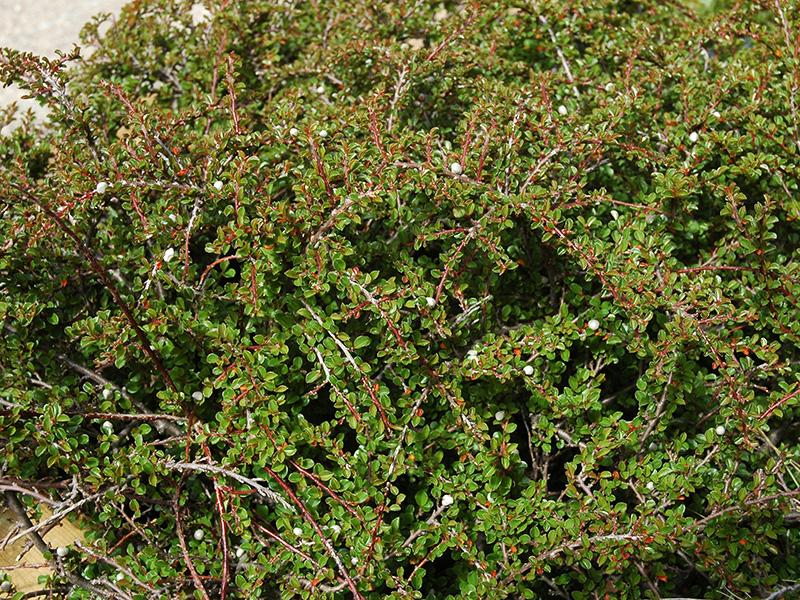| General Description | Low, wide spreading shrub with stiff branching habit. |
| ID Characteristic | Small glossy green leaves. |
| Shape | Low, mounded |
| Propagation | Seeds should be scarified in acid for 60 minutes then provided 60 plus days at 5°C. Softwood cutting root easily if treated with 1000 to 3000 ppm IBA, quick dip and placed in peat/perlite or sand under mist. |
| Cultivation | Moist, well drained soil but will grow in any situation except those that are permanently wet. |
| Pests | Mites in dry condition and in winters with little snow cover, winter burn. |
| Flower/Leaf Bud Description | Similar to C. lucidus except smaller. |
| Leaf Description | Alternate, simple, suborbicular to orbicular-ovate, .5-2 cm long and wide, apiculate. |
| Flower Description | Perfect, pinkish, solitary, small. |
| Fruit Description | Pome, 0.5 - 2 cm in diameter, rounded, cranberry red August through September, borne singly. |
| Colour Description | Dark glossy green in summer changing to a good bronzy red tone in autumn. |
| Texture Description | Fine in leaf but often course in winter. |
